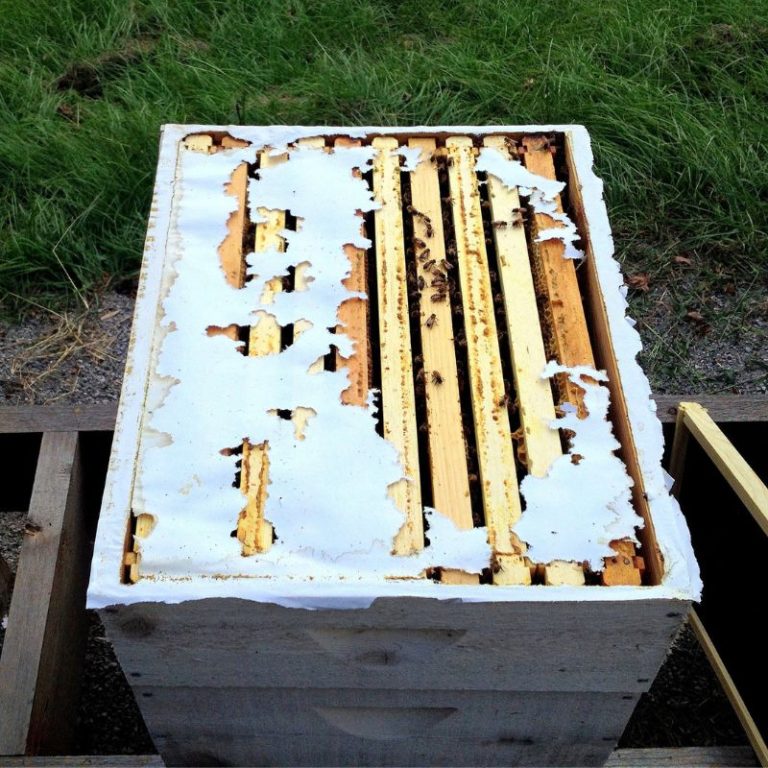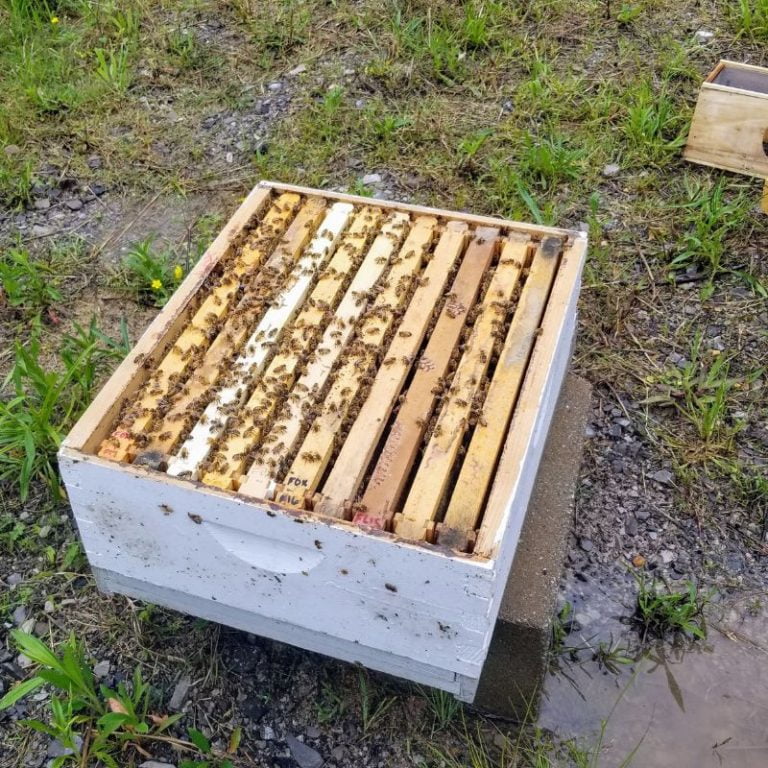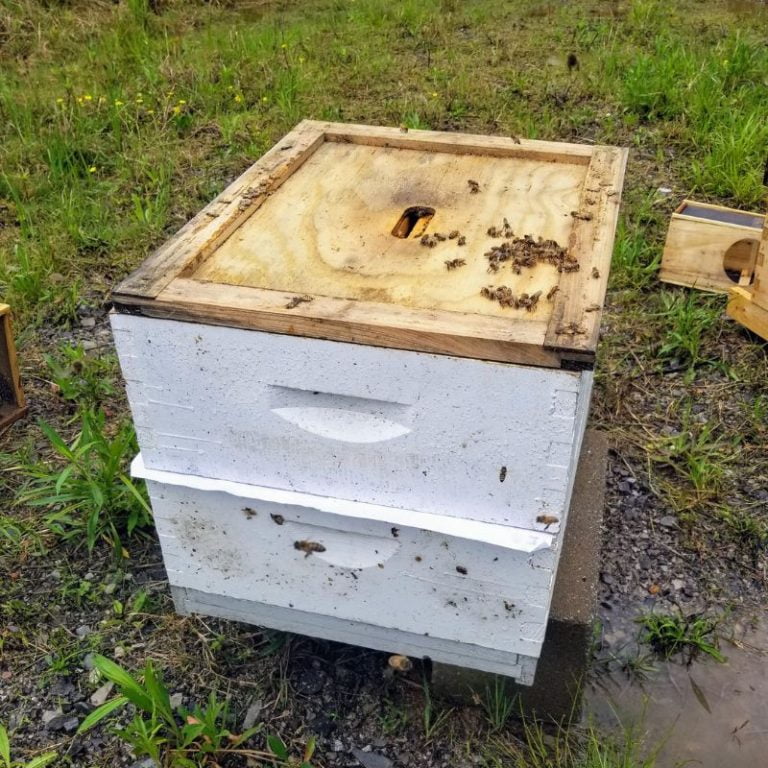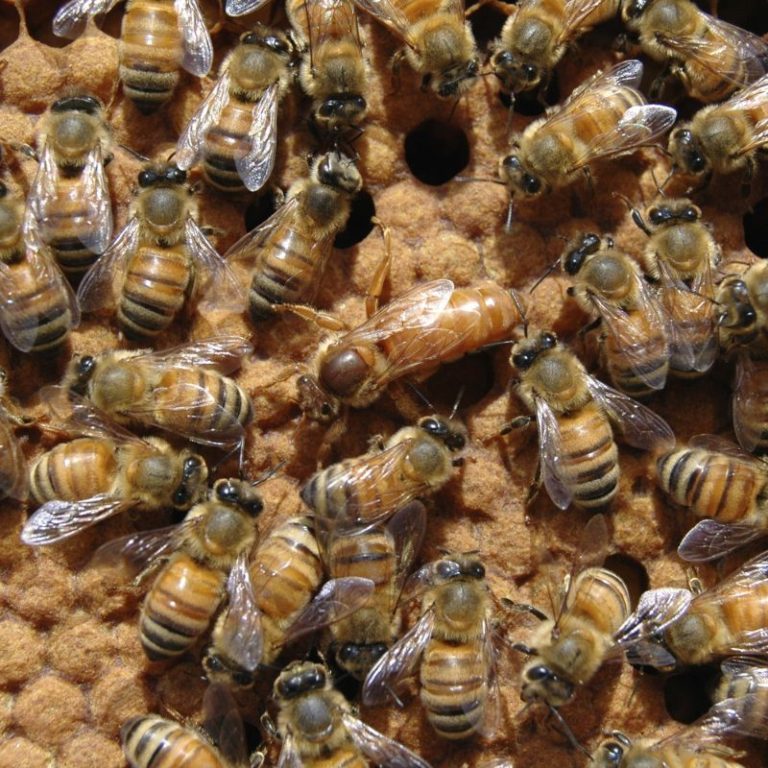Table of Contents
The stack of white boxes you see in your mind is a single bee hive. Sometimes these hives are very strong and some are weak. Beekeepers may have a situation where one is a queenless hive and won’t survive much longer as is, so they will need to be combined with a stronger hive. It isn’t hard to combine hives, but you do need to understand what you are doing.
Combining Bee Hives

Sometimes, the best option is to combine two hives together instead of trying to keep a weak hive alive. This becomes more true as you start moving closer to winter.
If you go ahead and combine two colonies before winter, you reduce the risk of losing comb to wax moths or small hive beetles. You also save your own time because you aren’t trying to prop up the weak hive during the whole winter. Two weak hives have a better chance of failure than one very strong hive.
Looking forward, it’s often the case that the weak hive will continue to be weak going into early spring. If this happens, it will not rebound enough to be valuable during the spring.
What Is A Weak Hive?
A weak hive is a hive that does not have adult honey bees to cover both sides of 3 or more frames. It is a contender for being combined with another hive. A new colony that is “weak” has a much better chance of surviving the upcoming winter than a weak hive in September.
What Do Bees Do In The Winter?
This is relative, but it gives you an idea of what you are looking for. There have to be enough adult bees to keep the eggs or larva warm. Combining weak hives is sometimes the only option.
Even with a great queen, it may not be worth saving if there isn’t enough time to build the adult population up before winter. A weak hive is also a hive that has no queen.

A weak hive may also have a laying worker. It may also have a queen laying eggs in a very spotty pattern. These are all reasons for combining a hive. Weak colonies are rarely worth the effort of trying to maintain over the winter.
Before combining a weak hive with a stronger hive, you want to be sure that the weak hive is not suffering because of a varroa mite, wax moth, or a small hive beetle infestation.
You also want to be confident the weak colony doesn’t have American Foulbrood. If you have frames with any of these problems, do not move them into your strong hive. You can actually test for Foulbroods with these kits.
You will need to deal with these problems appropriately and prior to combining bee hives.
What To Do When Combining Hives
The tricky part about combining hives is what to do with all the frames. Typically, both hives will have several boxes of brood frames and honey frames in them. This is more than you would want in a single hive.
When you are combining hives, remember that it is in preparation for winter. That is why it is good practice to have a hive condensed down to as few boxes as possible. This is usually a combination of 2 boxes. For an example of what is a normal setup for going into winter, take a look at our beginner beekeeping kits. They are designed to be the right size colony for going into winter.
Consolidating Your Weak Colony
When combining hives, you will want to have your best 20 or 30 frames (if using 10-frame equipment) or 16 or 24 frames (if using 8-frame equipment). Go through your weak hive and identify your best frames with brood or pollen or honey in them.
Ideally, you want your weak hive to be consolidated down to 1 box or one hive body. If you have more frames of brood, pollen, or honey, then fit them into one box, and choose the best of all of them. Ideally, keep as much brood as possible. But a weak hive usually doesn’t have much brood and may only have honey stores or honey frames. Keep the best frames of the bunch and put them all into one box.
Consolidating Your Strong Colony

Sometimes the colony that is strong has a few frames that are not very good. These frames can be replaced with good frames from the weak colony. For example, if you are using 10 frame equipment and your strong colony has 18 really good frames and the weak colony has 12 good frames, you can move the extra 2 good frames from the weak hive into the strong hive.
You are just trying to get the best of the best in both hives so that both bee colonies have best chance of survival.
Bringing The Bees Together
Now, the easy part is putting the bees together. If the weak hive still has a queen, you will want to get rid of her. It isn’t pretty, but you need to do it.
You could squish her or put her in a jar of alcohol and start making your own swarm lure. Either way, she needs to be out of there.
You shouldn’t feel bad about this. She was having issues, so it was time for her to go. At this point, you could drop the consolidated weak hives’ box directly onto the strong hive.
The stronger hive is usually the bottom hive body for the new colony. The weaker colony box is added to the top of the bottom hive body. Remember, as the bees are going into winter, you want them to have at least 10 medium frames of honey in the hive. And the best place for the honey to be is above the brood nest. You want the top box to be mostly honey and the bottom box to be mostly brood. This isn’t always possible, but that is the goal.

There is a chance the bees will fight, and the good queen could be injured. Then, many of the bees will fly back to their original hive location. It is safer and better to use a technique called the newspaper method.
How To Use The Newspaper Method

When turning two hives into one hive, the weak hive goes on top of the strong hive. Leave the strong hive in place and put the weak hive on top of it separated by paper.
Using a sheet of newspaper or any thin paper, make a single layer over the top box of the strong hive. We have used sheets of printer paper as back-up.
The sheet of paper will be resting over the frames. Take a hive tool or a thin stick and make a couple of cuts into the paper. They should be small enough so bees can’t get through it, but eventually, the bees chew through the paper.
Place the weak hive’s box (or boxes) directly on this paper and top them with the inner cover and the outer (telescoping) cover. You will want to seal the bees of the weak hive in their box. If they can get out easily, they will fly back to their original hive location.
By trapping them in the box, you force those bees to chew through the paper to get out of the hive. Two things happen when you force the bees to do this. The first is that by the time they chew through the paper, they will get to know their new queen. The bees will then accept her as their own.
The second thing that happens is that the bees forget where their original hive is. Most honey bees will not go back to the original hive location once they leave the hive. Chewing through the paper usually takes a few days or about a week at the most. . You should not disturb the bees during that period of time.
You know that this has worked when you start to see pieces of paper discarded in front of the hive. When you see this, you can peel off the rest of the paper, if there is any.

Packages or Nucleus Hives, Which is Better?
Keeping bees healthy is a tough job, and it takes decades to get good at. When starting to keep bees, the learning curve is steep for
Effects Of Combining The Two Hives
When you combine the two hives, you will lose some of the forager bees from the weak hive. This is not a big deal because they will eventually find their way to a nearby hive.
If you want to save as many of these bees as you can, you should combine the hives close to sunset or after dark. Another trick is to place a movable object where the weak hive was and allow the straggler bees to congregate on that. You can then take the bees that land on it and dump them in front of the new combined hive. You would have to do that a couple of times, but eventually, the “lost” bees will settle into their new strong hive.
More Tricks For Combining Bee Hives
There are some times when you have to combine a hive, and you don’t have time to do the newspaper method. Or when installing a nucleus hive with 5 frames into another hive. When combining two colonies, you are wanting to protect the queen. You can put the queen into a queen cage when introducing the colonies, but that isn’t always easy.
Protect The Queen
You can introduce a queen to a queen-less hive while she is walking around on the frame. The technique for doing this involves making sure the queen is walking around on the brood comb, and she has an additional frame on either side of the frame she is on. If all the frames are full of bees, the adult bees on the queen’s frames will help insulate her from the foreign worker bees. Eventually, all the bees will be familiar with the smell of the new queen.

Sugar Syrup All Over The Bees
Sugar syrup is a beekeeper’s friend and the bee’s best friend. When combining bee hives, a coating of syrup over the bees will occupy them and make them focus on cleaning up the mess. You wouldn’t want to cover the queen, but covering the worker bees with syrup works great. A sprayer is the best way to do this but isn’t always available. Most often, the syrup is just dripped over the tops of the frames, and it drips onto the bees.
Adding supplements to the sugar syrup like Complete is a great way to confuse the bees even more. Feeding the bees during this process is always a good idea, even if you just feed them traditionally in an internal feeder or entrance feeder.
Smoke Them Heavily
Smoke is a way for a beekeeper to confuse a colony, making them less likely to communicate effectively. This is when it helps to know how to light a smoker. When you heavily smoke two colonies before combining them, they will have trouble knowing who is who. This is a great way to combine hives if you are in the bee yard and were not expecting to do it.
Hopefully, this helps you make the most of a weak hive situation. Combining colonies is usually the best option when you have a weak colony or two beehives that are weak.
Lorem ipsum dolor sit amet, consectetur adipiscing elit. Ut elit tellus, luctus nec ullamcorper mattis, pulvinar dapibus leo.




